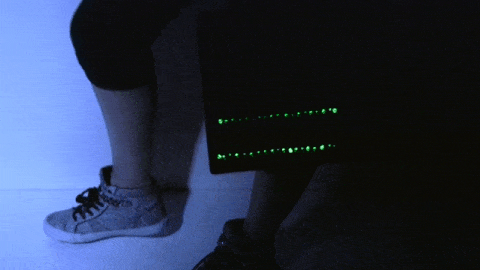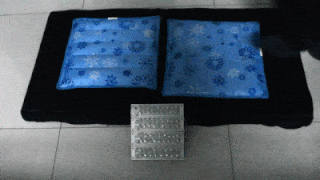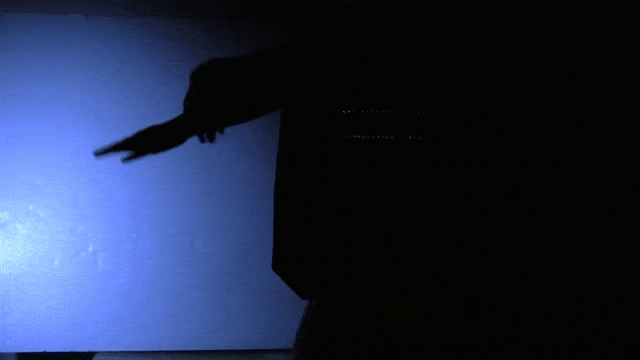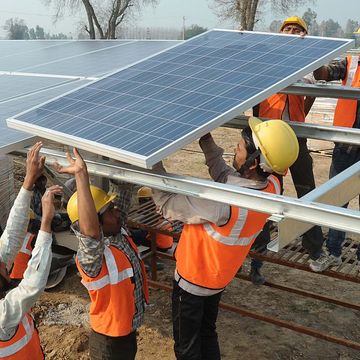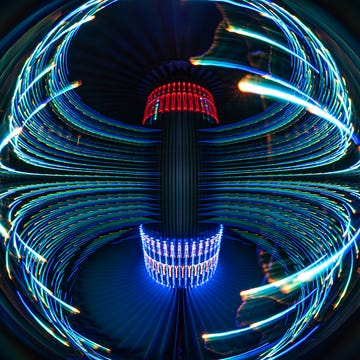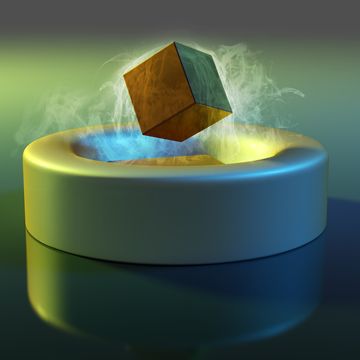It looks and feels like a cheap strip of silicone. Don't be fooled. This soft rubbery material makes electricity when it's bent, pressed, or stretched.
Make a wristband with it and it can power LED lights as you move your hands. Fold it into your shoe to create a self-powered sensor that can tell when you're walk. The best part? It costs less than a dollar to make."The most expensive part is adding the LEDs," says Zhong Lin Wang, the inventor and a material scientist at Georgia Tech.
Wang and his colleagues just unveiled their new bendy generator in a paper today in the journal Science Advances. The device is a nanogenerator called a saTENG.Unlike previous attempts at creating these generators, Wang's device is incredibly flexible and robust. In a test it was stretched up to 300 percent of its original size more than 55,000 thousand times with no damage.
The nanogenerator has three basic components: A rubber sheath, a liquid center made of salt or tap water, and a simple wire "of copper or iron or aluminum, for example" that reaches into the liquid center, Wang says. That's it. Electricity is harvested as current flows up and down that wire. "It's very, very easy to make. If you filled a water-balloon with saltwater, you could make one of these things, [albeit an exceedingly weak one,] and use your hands to press the balloon to generate power," he says.
Wang's rubber saTENG can produce around 10 to 20 microwatts per square centimeter of material, a fairly impressive feat. Formed into a bracelet, a single saTENG can light up dozens of LEDs with just the motion of everyday activity.
These simple materials create electricity from movement by harnessing something pretty common—static electricity.
Say you're squishing one of these saTENG's with your index finger. "As your hand approaches, the electric charge of the liquid inside the rubber actually changes a little bit," Wang says. This is because you're creating what physicists call electrostatic induction, the process that builds up the shock that can zap you via static electricity. "To balance out the change you're causing, electrons will flow up your wire into the liquid, creating an electrical current."
Then, once your index finger depresses the rubber and releases, "more electrons will flow back from the other direction, from the liquid back to the ground via the wire, because the material restores its natural state." The takeaway: During both the squeeze and the release you're creating electricity that can be harvested. The device doesn't need to be touched by human skin specifically, though. "Besides skin, it can generate electricity from contact rubber, metal, a piece of fur, or honestly whatever," says Wang.
Are these wee generators good for more than clever party tricks? Wang and his colleagues are investigating a wide variety of uses that approach science fiction. "Besides power generation, this is a sensor that doesn't require batteries. We can form these devices into flat pads, which could self-power and monitor when people walk over them... or you could integrate them into walls and detect when someone is pressing it, or any other range of similar security uses," he says.
Previously, Wang's team surgically implanted similar (albeit inflexible) device into the chest of a rat, and found that they could generate electricity with each of the rat's breaths. That could lead the way to self-powered pacemakers.
Our hope is a more immediate commercial use: A new generation of battery-less light-up sneakers.

